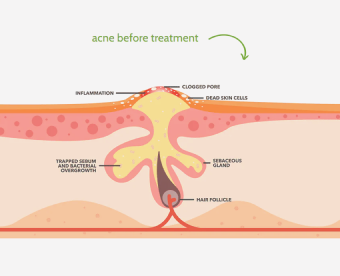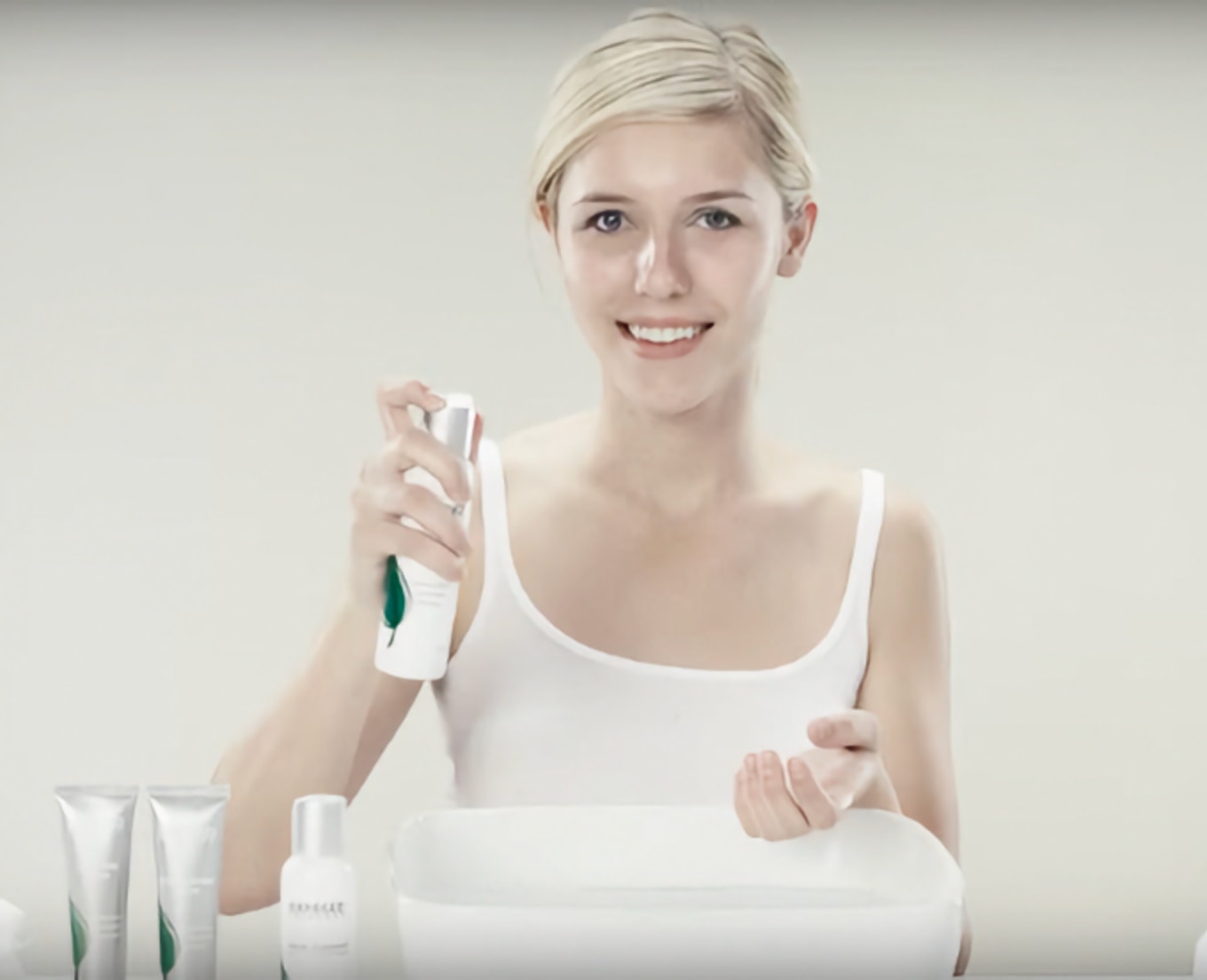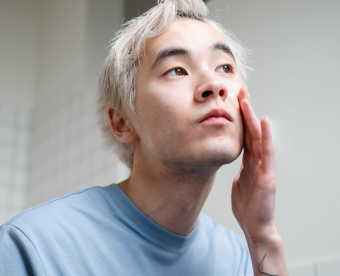While acne is commonly associated with our face, the acne on feet is equally concerning. Bumps, blisters, and lesions on the feet have diverse causes.
This article will explore the mysteries surrounding foot problems, their underlying causes, symptoms, and effective treatments.
Also read: How to choose the best acne treatment
Biggest Take-Aways:
- Foot conditions have various causes and manifestations, but not all are contagious.
- Regular foot checks and appropriate footwear play pivotal roles in preventing foot issues.
- Understanding the specifics of each foot condition aids in timely and effective treatments.
- Exposed Skin Care stands out as a comprehensive solution for managing acne and promoting skin health.

Symptoms and Causes of Bumps on the Feet
The feet, particularly the soles of the feet, are subject to various conditions, many of which manifest as bumps or lesions. The term "acne on feet" is often a misnomer.
These bumps can appear anywhere on the body but when they appear on the bottom of your foot or the ball of the foot, they can cause pain, especially pain when walking. Let's explore the common causes and symptoms of these foot problems.
Plantar Warts
Plantar warts, or warts on the bottom of the foot, are caused by HPV (Human Papillomavirus). Unlike acne, these warts are contagious and spread through contact. They are especially common in areas like locker rooms. Although they may go away without treatment, it's essential to keep your feet dry to prevent them.
Fungal Infections
A common fungal infection on the feet is athlete's foot. The fungus can appear anywhere on the body but thrives in warm, moist environments, especially between the toes.
Symptoms include itchy, scaly patches of skin. Direct contact or sharing shoes with someone infected can spread this condition. Antifungal creams are often the appropriate treatment.
Dyshidrotic Eczema
This condition causes fluid-filled blisters to form on the soles of the feet and the palms of the hands. The blisters can be itchy and painful.

While the exact cause is unknown, risk factors include stress and exposure to certain metals. Corticosteroid creams may help alleviate symptoms.
Calluses and Corns
Pressure and friction from walking or inappropriate footwear can cause thick, hard patches of skin known as calluses on the bottom of the foot. When these develop on bony areas like the side of a big toe, they're termed corns. Orthotics can reduce pressure, and topical treatments can soften the skin.
Cysts
These soft tissue growths filled with fluid can form anywhere on the body, including the feet. A cyst on the foot may be tender, especially when pressure is applied. In some cases, surgery may be needed to drain a cyst.
Other Notable Conditions
Gout
Gout is a condition that causes painful bumps to form, particularly around the big toe. Symptoms include intense pain and swelling. Risk factors include diet and genetics. Treatment often involves dietary changes and medications.
Blisters
These fluid-filled bumps form due to friction. They can appear anywhere on the feet and hands. To prevent infection, it's best to let blisters heal on their own. If they become infected, antiseptic treatment is crucial.
Prevention and Treatment
Keeping Feet Clean and Dry
One of the best ways to prevent many foot problems, especially fungal infections, is to keep your feet clean and dry. Fungus thrives in moist environments, so make sure to dry your feet thoroughly after showers or activities that cause you to sweat.

Proper Footwear
Wearing shoes that fit well and provide support can prevent many conditions like calluses, corns, and blisters. It's also essential to avoid sharing shoes with someone else to prevent contagious conditions from spreading.
Regular Checks and Care
Regularly inspecting your feet can help you catch issues early. If you notice any unusual bumps or changes, especially if they cause pain, seek appropriate treatment. While some conditions may go away without treatment, others can become more severe.
Limit Barefoot Exposure in Public Areas
Areas like locker rooms and public showers are hotspots for contagious foot problems. Wearing flip-flops or protective footwear can reduce the risk.
Topical Treatments
For many conditions affecting the feet, topical treatments can offer relief. From antifungal creams for fungal infections to corticosteroid creams for conditions like dyshidrotic eczema, there's often a topical solution available.
Benefits of Using Exposed Skin Care to Manage Acne
When it comes to managing acne, Exposed Skin Care stands out as a remarkable solution, especially when considering the myriad of skin challenges one might face.
Here are some benefits of Exposed Skin Care:
- Targeted Solution for White Bumps: Tackles those pesky white bumps that may appear anywhere on the face or body.
- Comprehensive Treatment: Exposed Skin Care addresses the root causes of acne.
- Diverse Skin Support: Exposed Skin care is suitable fro all skin colors.
- Prevention: With regular use, you're less likely to develop further breakouts.
Remember, for acne and accompanying symptoms, Exposed Skin Care is your trusted ally. Stay free and stay confident with radiant skin.
Conclusion
In understanding the challenges of foot acne and its various manifestations, we've unearthed that not every foot condition is contagious. It's paramount to understand each ailment, like how ulcers differ from plantar warts or how cysts are normally benign soft tissue formations.
Interestingly, bumps that form on the ball of the foot might not always be due to fungal or viral infections, and sometimes, merely being barefoot in public can lead to unwanted foot problems.
Interactions such as direct contact with an infected person or object can elevate one's risk. Equipping oneself with the right knowledge and products is vital in navigating these challenges.
Taking care of your overall skin health is crucial. Exposed Skin Care addresses foot acne and also helps maintain overall skin health and radiance.
FAQs
What causes white bumps on the feet?
White bumps can result from various conditions, including fungal infections, warts, and cysts, among others.
Is every foot condition contagious?
No, not every foot condition is contagious. For instance, cysts are normally non-contagious, while plantar warts can spread through contact.
Why do bumps form on the ball of the foot?
Bumps can form due to friction, pressure, or specific conditions like gout and calluses.
Is it safe to go barefoot in public areas?
Going barefoot in public areas like locker rooms can increase the risk of contracting contagious foot conditions.
How can Exposed Skin Care products benefit my skin?
Exposed Skin Care offers solutions for managing acne, providing relief from white bumps, and promoting overall skin health.















